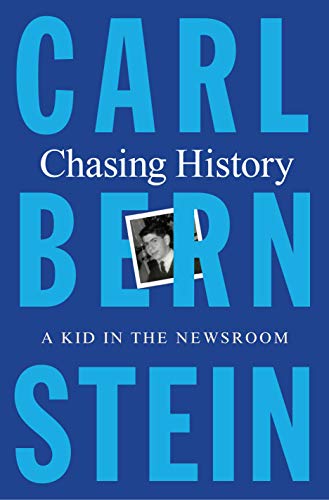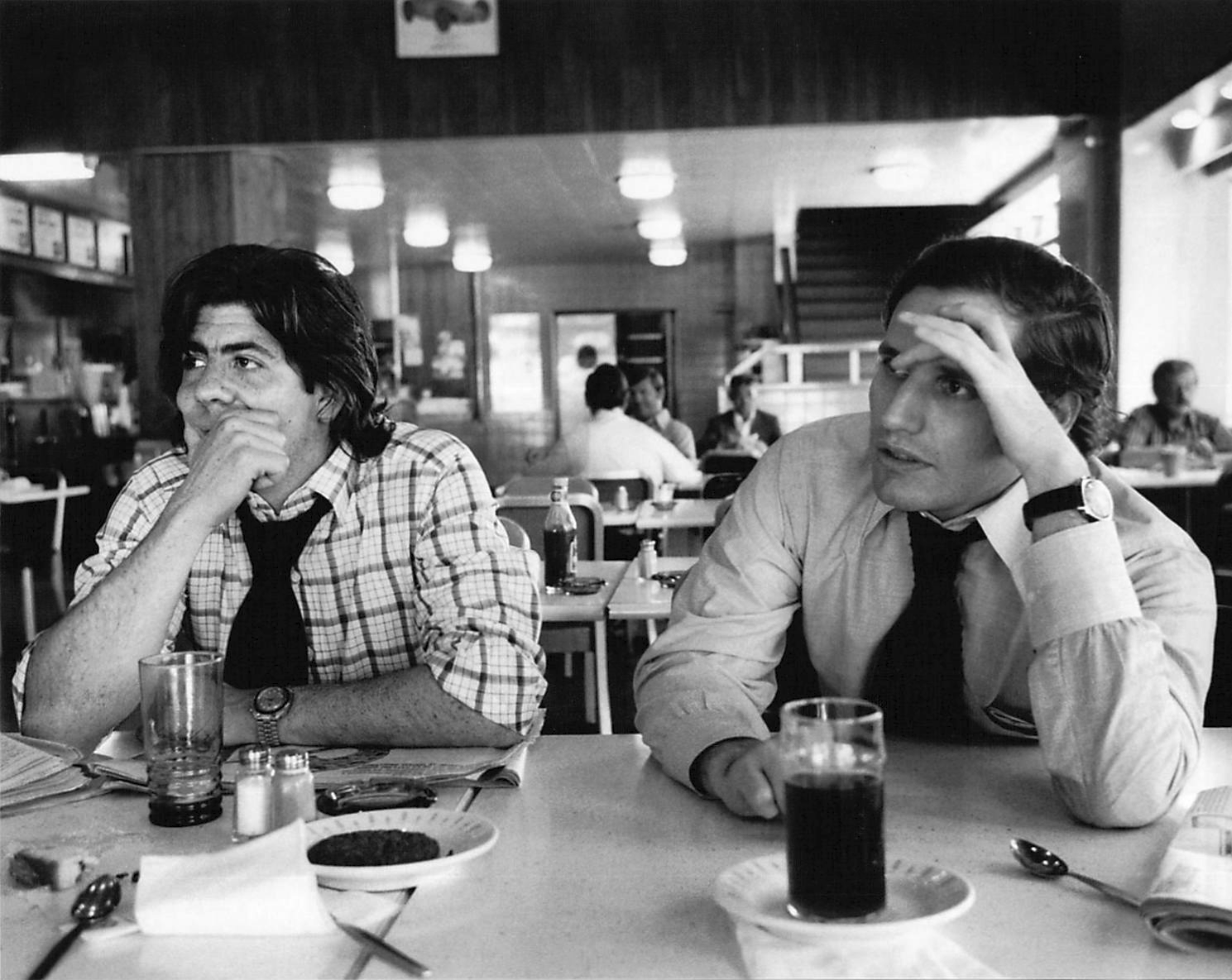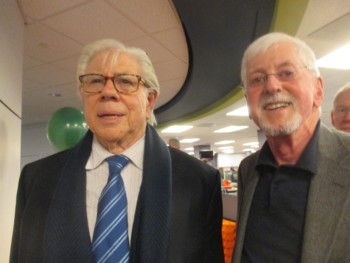In his latest memoir, Carl Bernstein retraces the path of his early journalism career before he went on to make history at the Washington Post.
-
Winter 2022
Volume67Issue1
Editor's Note: Eugene L. Meyer, a longtime Washington Post reporter and editor, is the author, most recently, of Five for Freedom: The African American Soldiers in John Brown’s Army. His own memoir is currently a work-in-progress and on a sabbatical of indefinite duration.
Journalists of my generation and acquaintance are having a memoir moment.
Peter Osnos, who covered Prince George’s County, Md. for the Washington Post before I did and went on to found PublicAffairs Books, is out with An Especially Good View: Watching History Happen.
Len Downie, who succeeded Ben Bradlee as executive editor of the Post and was both my boss and colleague, has published All About the Story: News, Power, Politics, and the Washington Post. (See Len Downie's essay “Let’s Go,” Said Mrs. Graham. “Let’s Publish” in the Summer 2021 issue.)

Now comes Carl Bernstein, the unmanageable half of the Watergate investigative team of Woodward and Bernstein (“Woodstein,” in newsroom shorthand). Carl’s name looms larger on his dust jacket than the actual title, which is Chasing History: A Kid in the Newsroom.
This is unlike his earlier “son’s memoir” Loyalties, the story of how his progressive parents, for a time members of the Communist Party, though not very active, were persecuted during the congressional witch hunt for alleged “subversives” during the 1940s and 1950s.
Both books struck close to home for me — literally. We live in a house where his boyhood pal Ben Stein was raised, next to the house where Carl grew up, on Harvey Road in Silver Spring, Maryland. After reading Chasing History, I re-read Loyalties, where Carl writes about playing ping pong in our (Ben Stein’s) basement.
Our street, it seems, was staked out by FBI agents and informants taking down license plate numbers of those entering and leaving the Bernsteins’ modest mid-century house. I found this absolutely chilling.
The dark days of the McCarthy era are not the subject of Chasing History, which is an affectionate look back at Bernstein’s teenage years as an ambitious copy boy and dictationist at the old Evening Star, founded in 1851 and for decades the capital’s dominant newspaper.
Stellar though he was at the scrappy publication, Carl failed to rise to reporter because he lacked one essential credential: a college degree. In fact, he spent so much time at the paper, he flunked out of the University of Maryland, and ultimately followed a departing editor to Elizabeth, New Jersey, where he won a slew of awards before hiring on at the Washington Post in 1966.
There he continued his undisciplined ways, running up a huge rental car bill (on a car he’d parked in a garage) and sleeping on the couch in the District Building press room. But, learning from some of the best stylists gracing the Star’s pages, he could write — and he wrote himself right into the Watergate story. Clearly, though, he still relishes his time at the Star as among his best years in the business.
And think of it! Carl casually attended President Kennedy’s press conferences, at times light, and, during the 1962 Cuban Missile Crisis, deadly serious. And he took dictation from David Broder in Dallas the day of JFK’s assassination. He marvels at the reporters, working for an afternoon newspaper, who could dictate (to him or others) a fully formed story from notes — a skill I strived for but never quite achieved at the Evening & Sunday Philadelphia Bulletin.
Bernstein and his pals were wonderfully mischievous, crafting a fake obit they got in the rival Washington Post. Obit writing was great training for new reporters. It’s where you learned to confirm a death with the funeral home. Carl, calling from a phone booth, told the hapless Post reporter he was on a train from Florida and would make the arrangements after arriving in town. But the story was clear “too good to check,” as we used to joke, and it wasn’t, so it ran.

From their lofty posts, reviewers have gushed over Carl’s nostalgia for what is largely missing from today’s so-called “legacy media,” hard-charging, old-fashioned, shoe-leather reporting by newshounds who don’t just make cell calls, troll social media, and rarely leave their offices (remote or otherwise) to go knock on doors, true “leg men” who hit the streets.
In media appearances promoting his book, Bernstein has extolled these traditional news-gathering methods and decried the superficiality of much of today’s reporting. The complimentary blurbs from key “influencers” have echoed this refrain.
“Engaging and vivid, this memoir of the beginning of Carl Bernstein’s journalistic journey is a welcome reminder of how important the press is and how much fun it used to be,” wrote historian and commentator Jon Meacham.
Without critiquing today’s increasingly barren media landscape, Bob Woodward, the buttoned-down half of Woodstein, extols Carl’s “brilliantly crafted personal story” and “perpetual engagement that led us to Watergate: watching, looking, questioning, and overwhelming the moment. His rules — go anywhere, listen hard, push and push some more — are, to this day, the touchstone in investigative reporting.”
Chasing History is, Post columnist and MSNBC commentator Eugene Robinson says, “an irresistible, beautifully written memoir.” Meacham notes, “A terrific read.” And indeed, it is.
But it is much more than that. It’s about life at the old Star for sure, with all its colorful Front Page ambiance and characters, not unlike the Bulletin in my time there. But it is also about race and segregated Washington — unvarnished local history, a major aspect of Chasing History the big picture pundits casually missed or willfully ignored.

Carl is a native Washingtonian, which is an important credential carrying cachet among those rooted in this city. Some of his recollections overlap with mine, from when I first arrived here in June 1964 — a kid from the North — to work as bureau librarian for the old New York Herald Tribune. But what were to me startling discoveries were to Carl just the way it was in the District and its suburbs, with its long history of racial segregation in schools, parks, pools, restaurants, hotels, department stores and movie theaters. South of the Mason-Dixon Line, this so-called border state, especially in these parts, was really more akin to the Deep South.
When Lemuel Penn, a District school official and Army reservist, was gunned down on a Georgia highway, I was dispatched to his home for a family photo, which I obtained, no questions asked. But Carl worked the phones and amassed great details and quotes about the man and his life and then wrote his obituary for the Star. Penn’s home was a brick colonial typical of many middle-class Washington neighborhoods. But that such houses existed in a black section of this town was news to me. I would live my entire time in the bureau on the White side of town, which is to say in neighborhoods west of Rock Creek Park, the racial dividing line.
Carl, as he writes in his book, crossed the line many times, covering both the white citizens associations and the black civic associations. He notes the passage of the 1964 Civil Rights Act, which LBJ signed at the White House, dispensing 75 pens.
In this instance, Carl wasn’t there, but I was. But he was deeply involved in local reporting at a time when I wasn’t, and his accounts of the events and personalities related to racial tensions then still resonate today.
After I became a Metro reporter for the Washington Post, I repeatedly crossed the lines that persisted. Showing new reporters and editors “suburban” Prince George’s County, I would take them to an Episcopal church graveyard in rural Aquasco and show them the Confederate markers. In 1860, I told them, only two people voted for Abraham Lincoln, “and they’re still looking for him.” Cue the nervous laughter.
Then I would add that in that last census before the Civil War, the county’s population of 12,000 included 9,000 enslaved persons — an overwhelming black majority. But by 1870, after Emancipation, the formerly enslaved had mostly left, and the county had a white majority, a demographic that remained until 1990, by when large numbers of Blacks had migrated from the District in pursuit of the American Dream.
So yes, by all means, read all about Carl Bernstein “chasing history,” but remember that history begins at home, and that includes his own largely overlooked hometown of Washington, D.C.

